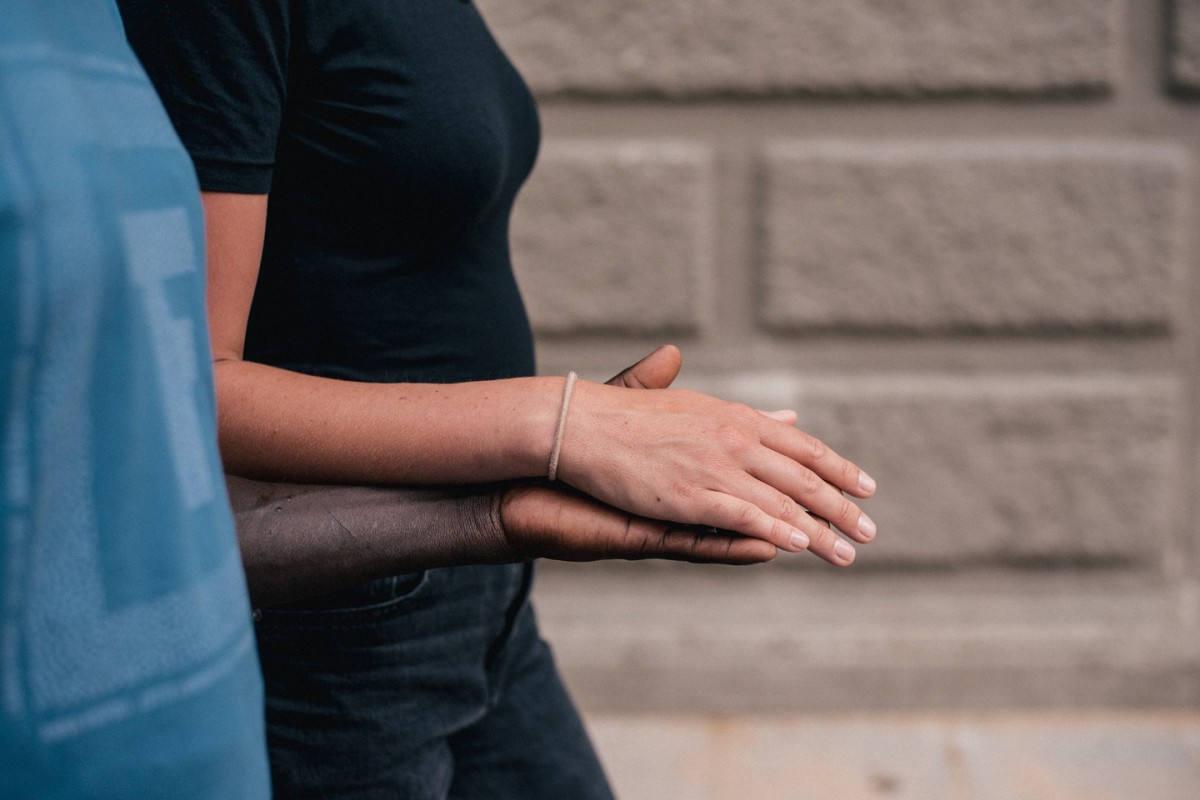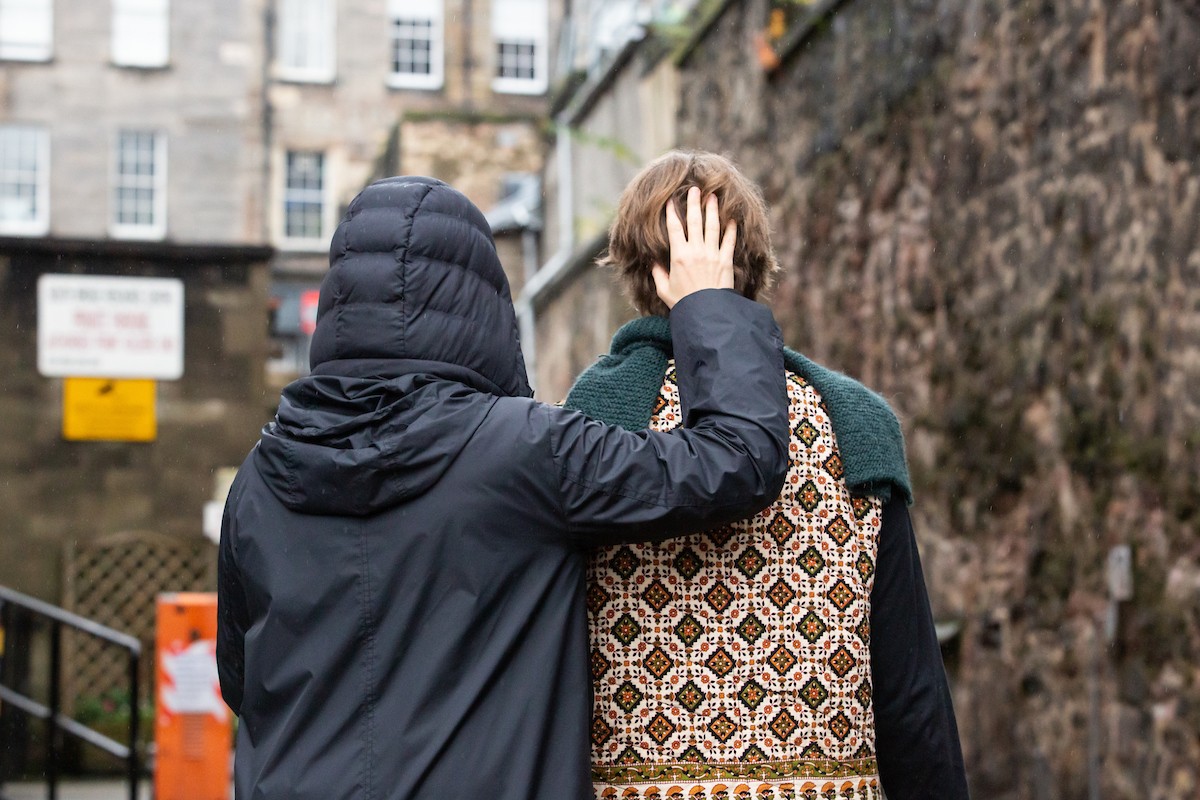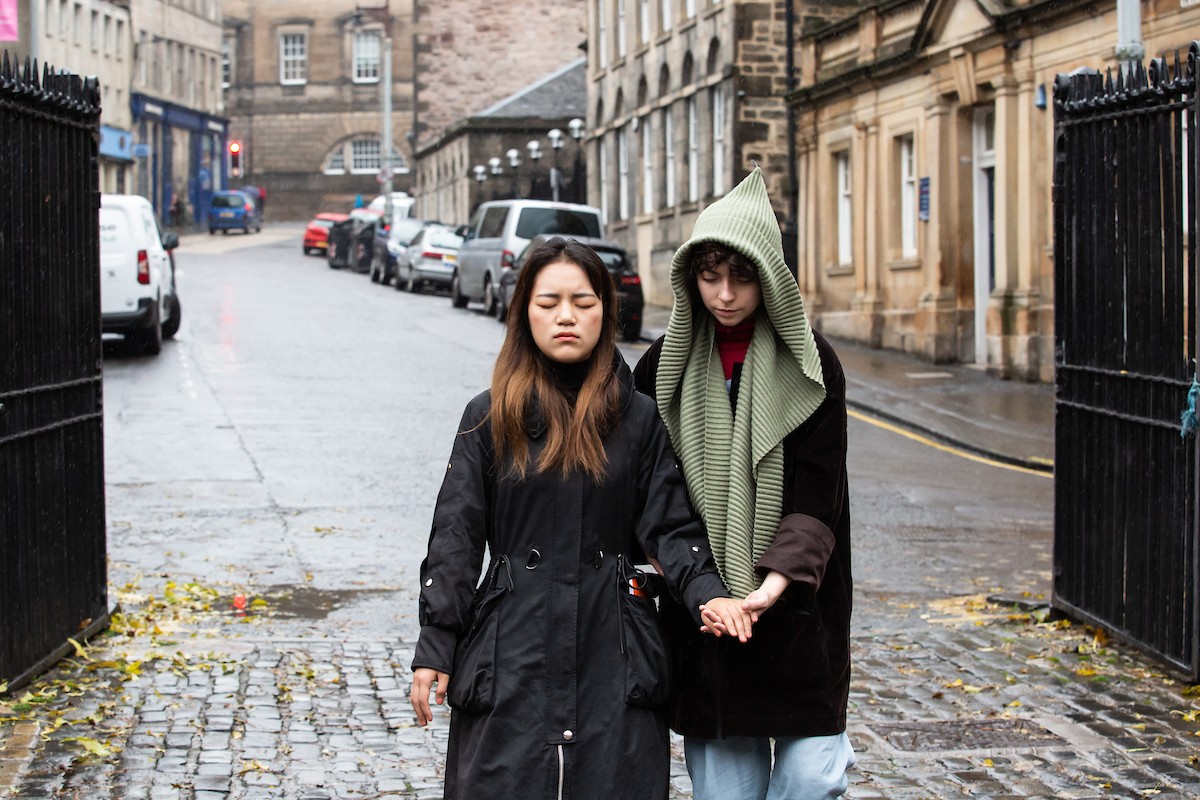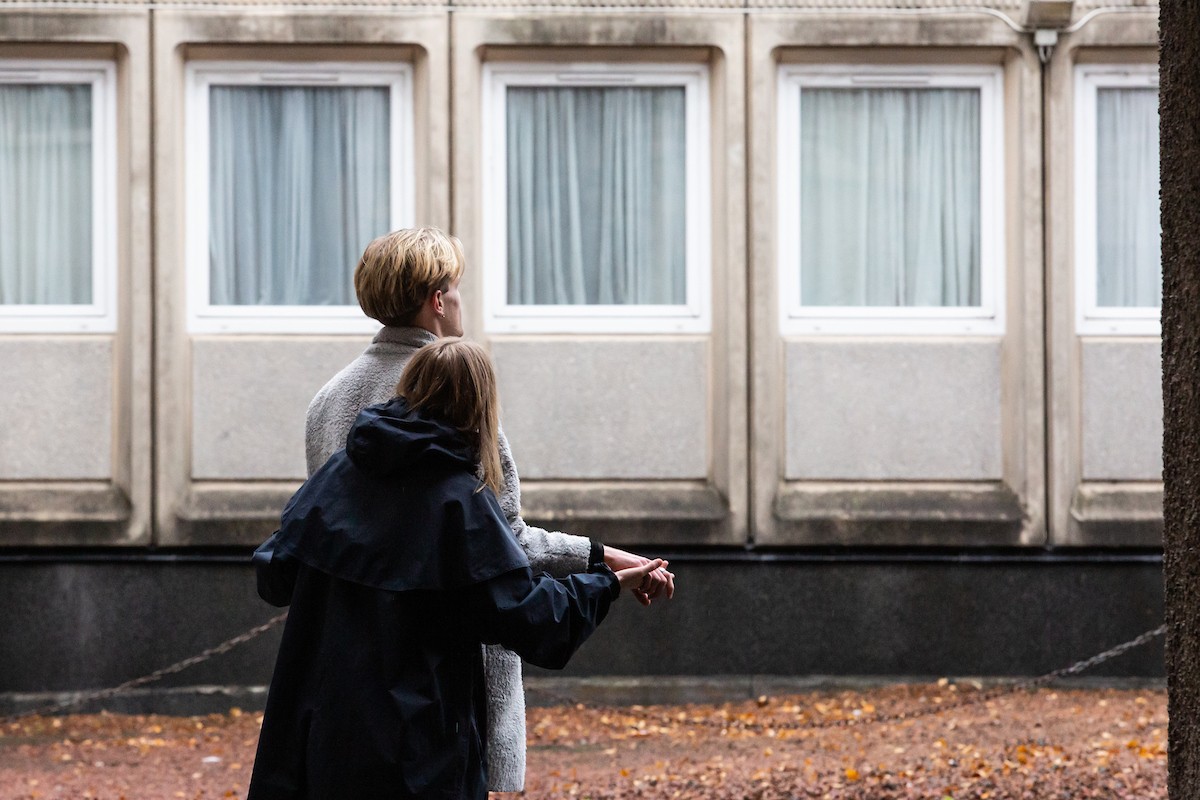Myriam Lefkowitz / Walk, Hands, Eyes (Edinburgh)
-

Artist Myriam Lefkowitz’s project 'Walk, Hands, Eyes' examines the relationship formed between a city and its inhabitants. Over the course of an hour’s silent walk through a city, a participant and a guide form an immersive relationship with their surroundings through the simple acts of walking, seeing, and touching. Conducted in silence, a performer guides a ‘viewer’ along a specific trajectory while asking them to keep their eyes closed, opening them only on command. Radically enhancing one's senses, the performance redistributes one’s usual perception of the city to the entirety of the body. 'Walk, Hands, Eyes' offers audiences the chance to see Edinburgh from a new perspective and for both guides and participants alike 'Walk, Hands, Eyes' offers the opportunity for a unique, intimate experience that is rarely experienced in daily life.
'Walk, hands, Eyes (a City)' is an ongoing exploration devised by Myriam Lefkowitz, having been performed around the world, the project is never the same. Myriam Lefkowitz's off-site project 'Walk, Hands, Eyes (Edinburgh)' is funded by Creative Scotland and coincides with 'The Extended Mind' exhibition on view at Talbot Rice Gallery. With thanks to Myriam’s long-term collaborators - Alkiviades Hadjiandreou, Julie Laporte, Jean-Philippe Derail.
Myriam Lefkowitz (b. 1980, Paris, France. Lives in Paris, France) has completed a Master in History at Paris-Sorbonne University and studied dance in New York, mainly with the choreographer-dancer Lisa Nelson. Since 2010 her research has been focused on questions of attention and perception, research that she is developing through different immersive devices involving direct encounter between spectators and performers. Lefkowitz’ work has been presented at Lafayette Anticipations, Paris (2018); Situations, Bristol (2017); Public Art Agency, Stockholm (2016); oO, The Lithuanian & Cypriot Pavilion, 55th International Art Exhibition, Venice Biennial (2013); and The Center for Contemporary Art, Vilnius (2013). In 2011 she took part in the master of experimentation in Art and Politics, SPEAP, Science Po Paris, founded by Bruno Latour.
Edinburgh Performers
Conor Baird, Antonina Bargielowska Johnsen, Fibi Cowley, Christie Dooley, Giacinta Frisillo, Jess Haygarth, Rosa Klerkx, Aniela Piasecka.
Exhibition Guide
Myriam Lefkowitz's off-site project 'Walk, Hands, Eyes (Edinburgh)' coincides with 'The Extended Mind' exhibition on view at Talbot Rice Gallery. The Exhibition Guide includes contributions from Tessa Giblin, Director of Talbot Rice Gallery; James Clegg, Assistant Curator; Dr. Miranda Anderson, Anniversary Research Fellowship at Stirling and Honourary Fellow, School of History, Classics & Archaeology, University of Edinburgh and Professor Michael Wheeler, Philosophy, University of Stirling.
The Exhibition Guide will be available following the exhibition opening.
Myriam Lefkowitz
'Walk, Hands, Eyes (Edinburgh)'
Citywide project
Myriam Lefkowitz’s practice has come to focus on attention and perception, with Walk, Hands, Eyes (Edinburgh) being led by performers specially trained by Lefkowitz to impart an embodied knowledge of the city.
Each guide has learnt to devise their own tours of Edinburgh in an intuitive way, after understanding with Lefkowitz how to read what might be termed by distributed cognition, the ‘experiential affordances’ of Edinburgh. J.J. Gibson coined the term ‘affordance’ to describe the way we perceive objects and environments as affording (offering) certain possibilities for action that relate to our particular bodies and their particular states. So, for example, if we are tired and see a hill – a fairly frequent occurrence in Edinburgh – then it will appear steeper. Edinburgh’s city structures also illustrate the idea of cognitive niche construction, the way in which humans are particularly talented at moulding niches – the environments around us – to supplement our cognitive needs. Geological, architectural, historical, conceptual and fictional domains also interactively compose the experience of a place: the accreted layers are a significant factor in the constitution and constraining of inhabitants’ and (to a lesser extent) visitors’ phenomenological horizons, at the same time as they perpetually reconstitute it.
After building the confidence to take people by the hand and out into the city, the guides ask participants to close their eyes so that they can share a different awareness of the space with them. During an hour- long tour participants are asked to quickly open and close their eyes, with the effect of producing a kind of mental snapshot of a specific scene.
These snapshots, being the only visual encounter during the tour, can often form strong mental images that induce idiosyncratic associations. Elena Brake – a guide on the project in Plymouth – describes the disorientating effect of the walk whilst reflecting on her first experience as a participant:
"During one of my walks I opened my eyes on a lamppost with a seagull that reminded me somehow of a seaside town I had visited as a child. When I closed my eyes, I felt like I was there, and as
the path I walked physically went down, the path in my mind kept going up, it felt as though all the sounds I heard were above me and I was descending into the ground. I felt the edges of the world around me blur and dissolve."
Approaching a place, through such an unfamiliar sensory experience, enables a revitalisation of perceptions deadened through habituation. The walk creates a closeness between the guide and participant as a relationship of trust is formed; exploring the city becomes a collaborative endeavour because although the guide takes the lead, the guide and participant collaboratively make new sense of the environment. At the end of the walks, guides have said that they have felt like they have known participants for a long time, whilst participants suggest it is like experiencing a secret. It is like a guided meditative experience and as Lefkowitz describes it: ‘The reality that we show as guides is like a trampoline: the thing you need to bounce on to be able to fly a little and get a different perspective on the world.’









